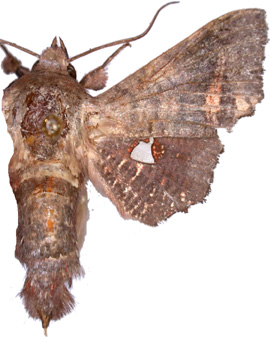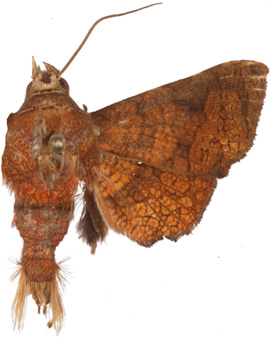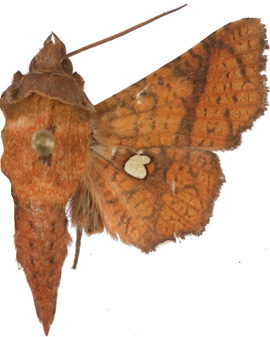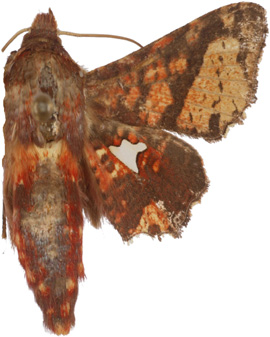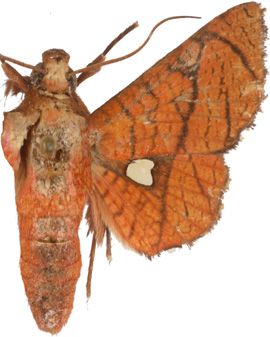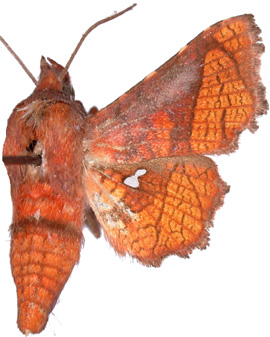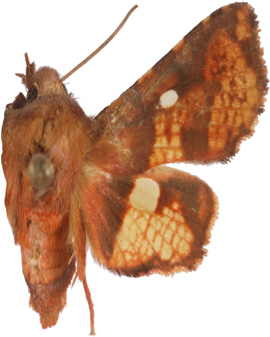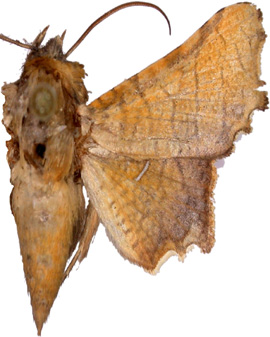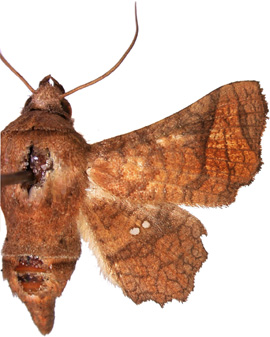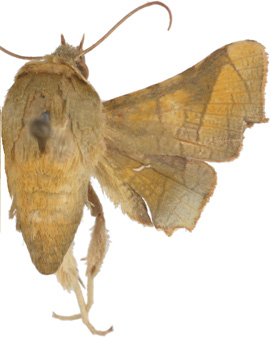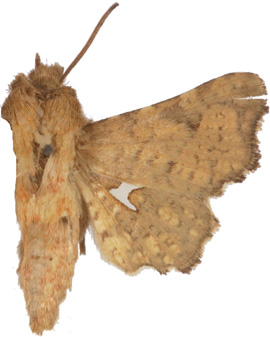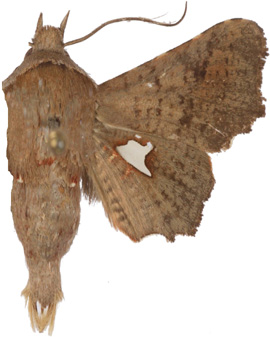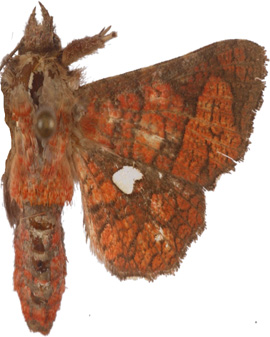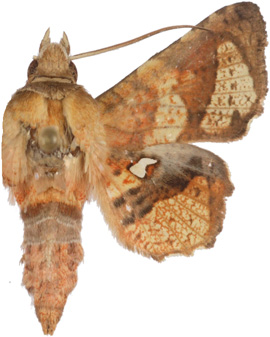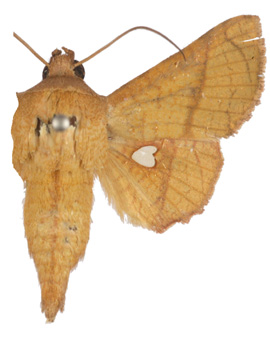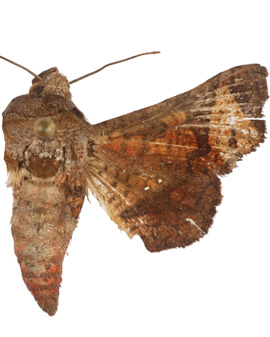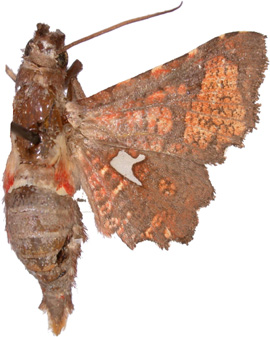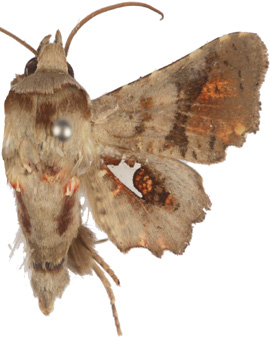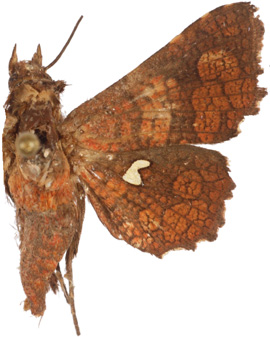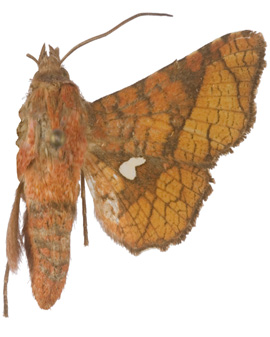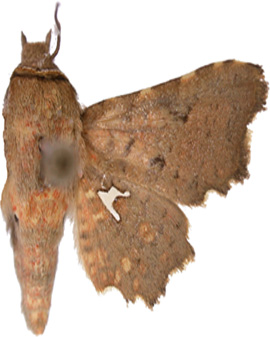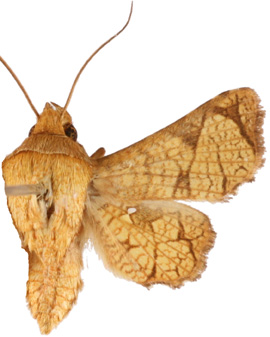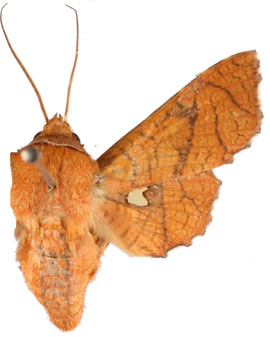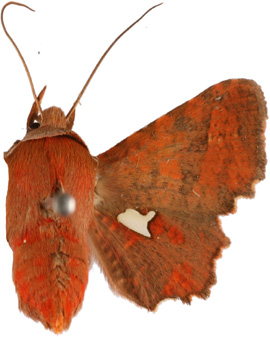Scientific classification
Animalia > Arthropoda > Insecta > Lepidoptera > Ditrysia > Thyridoidea > Thyrididae > Thyridinae > Dysodia
Genus Dysodia Clemens, 1860
Type species: oculatana Clemens (1860: 350) (Platythyris) is from Mexico.
Syn. Pachythyris Felder, Felder & Rogenhofer (1874: pl. 75 fig. 1) (type species siculoides) nec Pachythyris Boullier, 1976 (Brachiopoda) junior generic homonym. (Cowen 1981). Junior subjective synonym, (Whalley, 1968).
Syn. Platythyris Grote & Robinson, (1866: 361) [syntype fasciata = oculatana Clemens, 1860: 349] nec Platythyris Middlemiss, 1959 [Brachiopoda]; Junior homonym. (Cowen 1981) Junior subjective synonym (Dalla Torre, 1914: 44; Whalley, 1968).
Syn. Varnia Walker, ([1864] 1863: 69). (type species miniata). A junior homonym of Varnia (Walker, 1860b) [Neuroptera] (LepIndex).
Syn. Farnia misspel. (Walker, 1865c: 826).
Generic description: Proboscis present. Labial palps are thickly scaled, three segmented and upturned, the third segment acutely so. It reaches above the vertex. Antennae simple in both sexes. Eyes without interfacetal hairs. Hind tibiae with two pairs of spurs. Fore tibiae with epiphysis. Legs with femora and tibiae very hairy, tarsi with rows of spines on each segment. FW with some R veins fused or from cell. HW with vein 5 [M2] from the lower angle of the cell, its outer margin is irregular. Male genitalia with a prominent process, ‘hump’, on tergum. Female with secondary sac on bursa (Hampson [1893]1892: 369; Whalley, 1971a: 48).
Dysodia is a large pan-tropical genus of over 110 medium sized moths. They have a distinctive external appearance with a broad thorax and a stout, furry body. Many are bright reddish or orange-brown with a typical type of patterning. They often have HW fenestrae of various shapes and sizes. Most males have prominent tufts of hair scales on their hind tibiae (see, for example, Dysodia fenestrata male, showing tibial scale tufts, Plate 10, fig. 268a). They are probably related to the widespread temperate genus Thyris Laspeyres 1803. Over 30 species occur in S.E. Asia and there are several unnamed species and subspecies. This genus is in need of close examination.
Forbes (1942), writing of Dysodia sp. commented ‘Larva forming a very messy and foul-smelling nest whence the generic name’. ‘Dysodia’ is from the Greek for a disagreeable odour and is an American term for halitosis.

